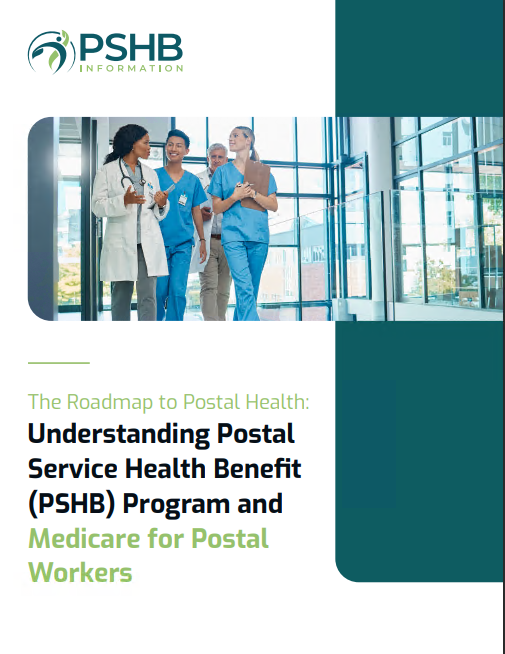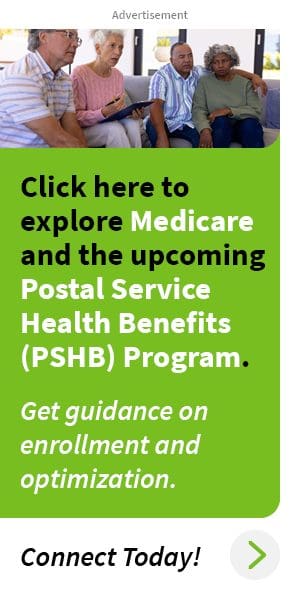Key Takeaways:
- The Postal Service Health Benefits (PSHB) program introduces significant changes for USPS workers and retirees, affecting both active employees and those already on federal health benefits.
- Understanding the new PSHB program and preparing for upcoming adjustments in coverage can ensure USPS workers and retirees make informed decisions about their health insurance.
USPS Employees Need to Prepare for Major Changes in Health Coverage—Here’s How
As a USPS employee or retiree, you may soon experience some substantial changes to your health coverage. With the introduction of the Postal Service Health Benefits (PSHB) program, which is set to replace the Federal Employees Health Benefits (FEHB) program for postal workers, it’s crucial to stay informed and prepared. The transition, effective January 2025, will bring both opportunities and challenges that you should understand to ensure continued and optimized health coverage. Here’s what USPS workers and retirees need to know about these major changes and how to prepare effectively.What Is the Postal Service Health Benefits (PSHB) Program?
The Postal Service Health Benefits (PSHB) program is a new health insurance system specifically designed for USPS employees, retirees, and their dependents. It is part of the broader Postal Service Reform Act passed in 2022, which aimed to address long-standing financial and operational challenges within the USPS. The PSHB will replace the FEHB program, marking the most significant shift in postal worker health benefits in recent decades. For years, postal workers have shared health plans with other federal employees under FEHB. However, the PSHB program will now provide dedicated health plans tailored to USPS workers. This separation from the federal employee pool aims to better align health benefits with the unique needs of postal workers and help alleviate some of the USPS’s financial burdens related to retiree healthcare.How Will This Affect Current USPS Workers?
If you’re a current USPS employee, you’ll be automatically transitioned into the PSHB program in 2025. While many elements of your health coverage will remain similar to the FEHB structure, there are critical differences that could impact your options and costs. It’s essential to review these changes carefully, so you understand what’s coming and how it may affect your healthcare access and financial planning. Key changes include:- Plan Options: You’ll need to select from a new range of health plans under the PSHB, which may differ in coverage options compared to FEHB plans. This could mean different networks of doctors and specialists.
- Medicare Enrollment Requirements: Employees who are eligible for Medicare, particularly those turning 65, will be required to enroll in Medicare Part B to avoid penalties and to continue receiving comprehensive health benefits under PSHB.
- Premium Costs: While pricing specifics aren’t yet fully available, it’s anticipated that premium structures under PSHB could differ from the current FEHB program. Understanding these differences will help you prepare for potential changes in how much you pay for health coverage.
Preparing for Medicare Integration
One of the most significant changes under the PSHB program is the mandatory integration with Medicare for retirees and postal workers turning 65. If you are already eligible for Medicare, enrolling in Part B will be necessary to continue receiving full health benefits through PSHB. This is a shift from the previous system under FEHB, where retirees could choose whether or not to enroll in Medicare Part B without it affecting their FEHB coverage.Why Medicare Part B Matters
Under PSHB, Medicare Part B will work alongside your postal health benefits to provide comprehensive coverage. Medicare will cover a portion of your healthcare expenses, with your PSHB plan acting as a secondary payer. This coordination of benefits can help reduce out-of-pocket costs for services like doctor visits, outpatient care, and preventive services. If you’re nearing Medicare eligibility or are already a retiree, understanding how these two systems will interact is crucial. Failure to enroll in Medicare Part B when required could lead to penalties, and more importantly, result in reduced coverage under the PSHB plan.What About USPS Retirees?
For retirees, the transition to the PSHB program may feel daunting, especially if you’ve been on the FEHB plan for many years. However, retirees will also be automatically transitioned into the PSHB, and the coverage will continue.Important Steps for Retirees
If you’re already retired or planning to retire soon, here are some important steps to take:- Review Your Medicare Status: If you’re 65 or older and haven’t enrolled in Medicare Part B, you’ll need to do so to ensure you maintain comprehensive health benefits under PSHB.
- Evaluate New Plan Options: Just like current employees, retirees will have new plan options under PSHB. It’s vital to compare the different plans to find one that aligns with your healthcare needs, whether that’s maintaining access to specific doctors or ensuring coverage for certain medical conditions.
- Plan for Possible Cost Changes: With the shift from FEHB to PSHB, premium costs, co-pays, and deductibles may change. Take some time to assess how these potential changes will impact your financial situation and plan accordingly.
Key Dates and Milestones for USPS Employees and Retirees
Mark your calendar with the following key dates related to the PSHB transition:- 2024 Open Enrollment Period: This will be the first opportunity for USPS employees and retirees to choose their PSHB plans. During this period, you’ll be able to review the new plan options and select coverage for 2025.
- January 2025: The official start date for PSHB coverage. On this date, all USPS employees and retirees will have transitioned to the new program.
Navigating the Enrollment Process
The enrollment process for PSHB will be straightforward, with automatic enrollment for most USPS employees and retirees. However, this is also an opportunity to reassess your health needs and make any necessary changes. During the 2024 open enrollment, you’ll want to:- Review Plan Options: Since the PSHB will offer a range of plans tailored to postal workers, it’s essential to compare each plan’s benefits, coverage networks, and costs.
- Check Provider Networks: Confirm that your preferred healthcare providers, including doctors and specialists, are included in the network of your chosen plan.
- Confirm Medicare Enrollment: If you’re eligible for Medicare, ensure that you’ve enrolled in Medicare Part B to avoid penalties and retain full coverage under PSHB.
The Benefits of Preparing Early
Given the scope of these changes, preparing early is critical for both active employees and retirees. The sooner you begin reviewing your options, the more time you’ll have to make informed decisions that best suit your healthcare needs. Here are some tips for getting ready:- Stay Informed: Regularly check for updates from the USPS and the Office of Personnel Management (OPM) on the PSHB program to stay current with new information.
- Attend Informational Sessions: The USPS and OPM will likely hold webinars or meetings to help employees and retirees understand the new program. Make sure to attend these to get firsthand information and ask questions.
- Consult a Licensed Insurance Agent: If you’re unsure about how Medicare enrollment or the new PSHB plans will affect you, consider speaking with a licensed insurance agent who can provide clarity on your situation and help you navigate the choices ahead.







